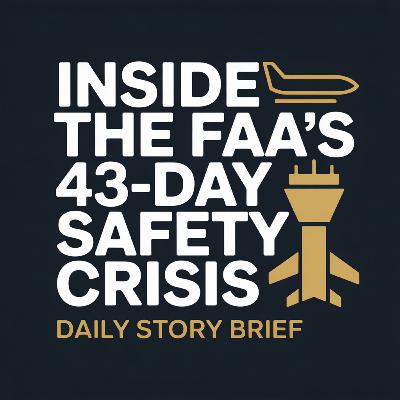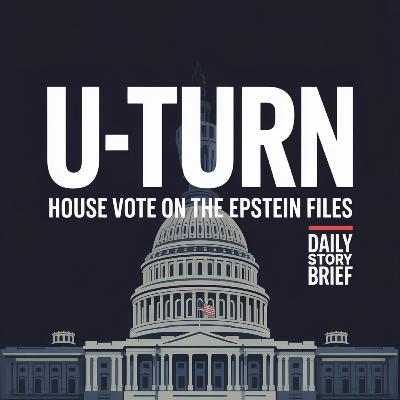Grounded by Politics: Inside the FAA’s 43-Day Safety Crisis
Description
Imagine waking up to find out that the system keeping thousands of planes safely separated in the sky is held together by unpaid workers running on overtime, second jobs, and sheer anxiety. That’s the reality this episode dives into.
In this edition of Daily Story Brief, we unpack how the longest government shutdown in U.S. history pushed America’s air travel system right to the edge of failure—and how it was pulled back from the brink in a matter of days. For 43 days, the national airspace system ran on fumes as about 13,000 air traffic controllers and 50,000 TSA agents were ordered to keep working without pay, missing two full paychecks while still being legally required to show up.
The hosts begin with the human cost: highly trained controllers taking second jobs driving for Uber, worrying about rent and groceries, and calling out sick as exhaustion and financial panic mounted. That strain quickly turned into a safety issue. We hear how the FAA started to see an alarming rise in loss-of-separation incidents, runway incursions, and pilot reports of controllers who sounded stressed, slow, or overwhelmed on the radio.
From there, the episode traces the moment that strain turned into a full-blown safety crisis. The FAA introduced unprecedented emergency orders, forcing airlines at 40 major airports to cut flights—first by 4%, then 6%, with internal plans ready to go as high as 10% right before Thanksgiving. The hosts walk through the data: tens of thousands of delays, thousands of cancellations, and a single day where about 10% of all U.S. departures were wiped from the schedule. They explain how “staffing trigger events” at control facilities exploded to a record 81 in a single day, an internal alarm that the system was operating below its own safe limits nationwide.
Then comes the whiplash: the near-instant recovery once the shutdown ends and funding is restored. The hosts show how, as soon as controllers knew back pay and bonuses were coming, call-outs plunged and staffing trigger events collapsed—from 81 down to just 1 in under a week. The FAA rapidly cut its flight reduction mandate from 6% to 3%, and by November 17th, it fully rescinded the emergency order, restoring normal operations just in time for the Thanksgiving travel crush.
But the episode doesn’t stop at the surface. It pulls back the curtain on the structural weaknesses the crisis exposed. Listeners learn that the shutdown didn’t create the controller shortage—it weaponized an existing gap of 3,000–3,800 missing controllers in a system that had already been running on mandatory overtime for years. The hosts explore why hiring and training new controllers is a multi-year process, why the system remains fragile even after the emergency ended, and how close another major storm or disruption could push it back toward chaos.
Finally, the conversation shifts to the policy battle now underway. Industry groups and airlines are pushing Congress to let the FAA use its own Airport and Airway Trust Fund—fed by ticket and fuel taxes—to pay controllers during any future funding lapse, insulating critical safety workers from political brinkmanship. The hosts connect this aviation story to a larger question: if the safety of U.S. air travel can hinge on the paychecks of a few thousand people, what other essential systems—cybersecurity, bridge inspections, public health—are quietly running with the same kind of hidden vulnerability?











